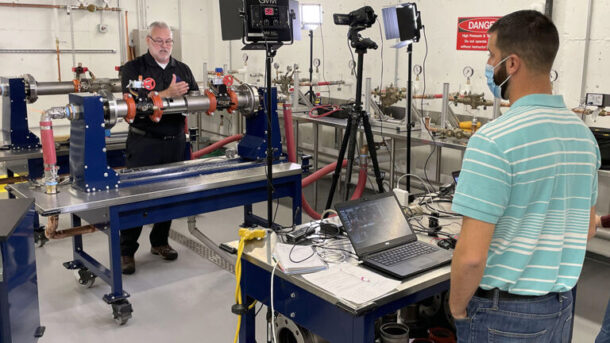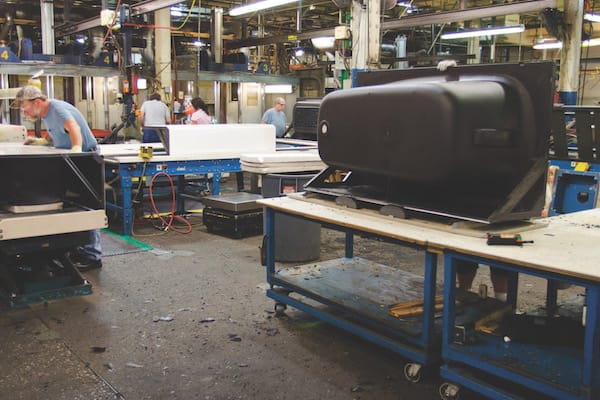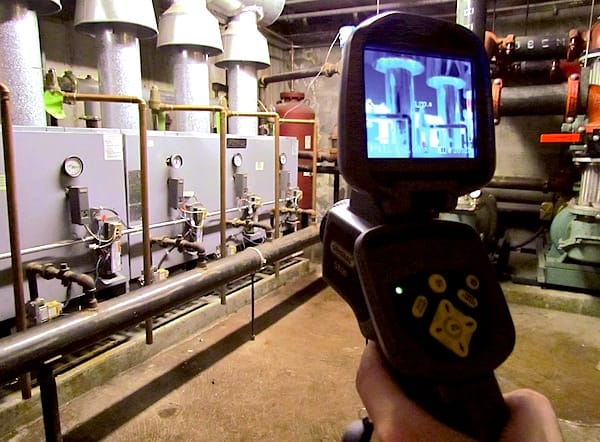The construction industry can be hard to survive in. Advances in technology have made the sector both easier to manage and more complicated to work in. What does that mean for a company like yours? It could lead to lower costs and an even better bottom line. So, can you spend less and become more Read more
Whats New

The construction industry can be hard to survive in. Advances in technology have made the sector both easier to manage and more complicated to work in. What does that mean for a company like yours? It could lead to lower costs and an even better bottom line.
So, can you spend less and become more efficient? Even in an industry of heavy labor? That’s something we’ll focus on today. Cutting costs in construction doesn’t need to be dangerous. Here are a few of the ways modern companies are making money while only spending a fraction of the price.

Better Client Communication
Being honest with the very people you’re selling to is always going to work out. Sure, you might want to lower the initial quote when they come to you to make sure you gain their business, but that won’t work out in the long run.
You’re going to overpromise and then underdeliver; this is something many new construction businesses suffer from. Be upfront, make sure you accurartely estimate costs, and then break it down in detail to ensure the client knows where you’re coming from.
And the more someone can feel you ebing honest, the better they’re going to feel about working with you. This is a good way to guaranteeing repeat custom in future.
Automating Certain Labor Tasks
Labor costs can be very hard to account for. However, they’re the one expense you need to fork out for. You’re going to need skilled labor and many pairs of hands on your side to keep your company a well oiled machine. Machines can’t do everything!
But they can do a lot of you. An automatic coil winding machine is a great bit of kit to invest in, as it can lower overall workfloor hours and reduce workday tedium all at the same time. Automate out the annoying parts of working in construction and your employees can do good work where it really matters.
Reduce Waste Products
Waste is common in all sectors, but in the construction industry it’s become a mounting problem. A lot of materials bought for projects, both big and small, can end up back in the storage room or on the rubbish heap. Either way, you spent on something you’re not going to use and now you don’t know what to do with it.
Find ways to make use of or reuse these materials; even if you sink a lot of costs into buying items for future projects, you’re going to make back on them. In the future, make sure you spend conservatively and only buy what you really need. This can be hard when you’re just projecting need, which is why measurements and scale should always form a part of your quotations.
Constrciton businesses can cut down on costs more easily than ever before. Take the above tips into account; you’re not the only company looking to make good on your finances this year, and you certainly won’t be the last!

If you don’t keep your brain active, you will forget all sorts of important pieces of information. We all have to ensure that we are brushing up on things in order to get the absolute best out of our situations. Whatever line of work you’re in or whatever your passions, idling for too long or Read more
If you don’t keep your brain active, you will forget all sorts of important pieces of information. We all have to ensure that we are brushing up on things in order to get the absolute best out of our situations. Whatever line of work you’re in or whatever your passions, idling for too long or veering away will mean that you will not be as accomplished. This kind of thing especially applies to those in the world of engineering and any other mechanical constructions. It’s very easy to forget important tidbits and small, minute details a lot of the time.
Thankfully, it’s just a case of staying in the habit and not allowing your brain to stray away for too long. In this post, we are going to be talking about lots of different ways you can keep your mind refreshed and knowledgeable. Whether you have a job using industrial machinery or you are still learning about the world of engineering, there is plenty to sink your teeth in at all times. Here are just a few ways to keep your mind active and fresh in this regard.

Online Courses And Tutorials
Amazingly, there are so many courses that are available for us that span lots of different levels. You might be able to get things for free or you could pick up a few textbooks for a few dollars. Whatever your choice, the fact is that you will be able to keep your ideas fresh. When you are bored one day during the week, you could head onto your computer and look at this kind of thing in order to brush up. Some might even come with challenges that keep your brain engaged and stimulated.
Hands-On Workshops
Undertaking personal projects or participating in workshops are great for improving your growing expertise. It doesn’t matter whether you are building a small-scale prototype or collaborating with fellow engineers, you solidify certain concepts with greater aplomb. For instance, you could install an engine gasket kit as an automotive engineer in order to understand more about engine mechanics and troubleshooting skills. Fostering a culture of continuous learning and innovation with only help you.
Mentoring And Proper Networking
There will always be people out there who can help you and who can work with you in order to improve. It’s a good idea to get in touch with this kind of people as they could really help with development. As time moves on, you could even begin mentoring others yourself. If you don’t get into networking and you don’t look to get in touch with people, you’ll never know what he’s actually out there and what you are really capable of.
Self-Assessment And Constant Learning
This is a rapidly evolving field and you have to be committed to constant learning. Take full advantage of resources such as journals, publications, and research papers in order to stay informed. Make time for regular learning and self-assessment so that you are able to identify areas of improvement.

Are you wondering how effective the right machines could be for your business? It is useful to have the right systems in the workplace. The business can benefit greatly. Do you want to know how beneficial the right machines are? You’ve come to the right place to understand more. Using this guide, you can find Read more
Are you wondering how effective the right machines could be for your business? It is useful to have the right systems in the workplace. The business can benefit greatly. Do you want to know how beneficial the right machines are? You’ve come to the right place to understand more.
Using this guide, you can find out how using the right machines will benefit your workplace.

The right machines boost efficiency
If your business relies on machines to complete tasks, it helps to use the right machines. The right machines will help increase efficiency in the workplace. For instance, adding a bulk bag filler system to your setup could speed up processes and minimize manual labor. When you use the right machines, it’ll make your business run quicker and smoother, helping you output more and achieve more efficiency.
Better safety is going to help everyone
You should never cut corners in business when it comes to machines. They will also help to increase safety. Machines can be built and programmed to be a barrier to injury or death for humans. Robot sensors are accurate and never tire. Robots stop when an object enters a guard placed around them. Machines use routines. People don’t always use routine. Machines are easily trained. Machines work, work, and work. There are no faulting machines when it comes to business operations. Your business will be safer and more productive. What more could you want?
Data-driven insights and operational expertise
The integration of machines with smart technology and the capability to perform analytics helps organizations gather intelligence and real-time insights about the performance, operations, and efficiency of their business, while decentralized control enables new business models to improve in a business-to-business context. Automated systems have been able to collect, analyze, and provide visual representation to various Key Performance Indicators (KPI), production metrics, and process variables, providing useful insights that can help in identifying areas in need of improvement and optimization and showing the overall OEE of the shop. The use of data to drive the decision-making process helps organizations identify areas for innovation, cost reduction, and operational excellence, leading to increased competitive advantage and continuous improvement in the market.
Growth and potential will come your way
Another advantage of having the right equipment is the ability to achieve more growth and potential. The right machines provide a business with the base to grow and scale. This allows the business to grow in terms of production capacity, go into new markets, and also diversify in terms of products offered, hence growth and scalability. Automated machinery can be scaled up or down in terms of production volumes in a quick fashion when market dynamics change, seasonality shifts, or a demand shift has been experienced. Scalable technology solutions such as finance systems will provide businesses with the opportunity to pursue emerging opportunities, enter new market segments and enable the business to be more agile and efficient in meeting the needs of its customers.

It’s been said that a bad workman always blames his tools. Now, while this is sometimes the case, where a poor job has been performed because the worker simply didn’t have the skill, your tools matter a great deal. It doesn’t matter if you’re the best carpenter in the world, you aren’t going to be Read more
It’s been said that a bad workman always blames his tools. Now, while this is sometimes the case, where a poor job has been performed because the worker simply didn’t have the skill, your tools matter a great deal. It doesn’t matter if you’re the best carpenter in the world, you aren’t going to be able to make a masterpiece table if you’re only equipped with a wrench and a tree.
Without the appropriate tools and equipment for your industry, you can’t expect to deliver the service you want and compete with other companies. Even if you can work something out, it might take far longer to get the job done, wasting materials and money along the way. The wrong equipment can even be dangerous, risking lives and health.
Unfortunately, equipment doesn’t come cheap. Investing in your tools and equipment is worth it, but you’ve still got to make the right choices along the way.

Hiring Vs Buying
One of the most important decisions when it comes to getting equipment and tools is where to hire or buy what you need.
Simply put, hiring equipment is cheaper in the short term, but buying equipment can save you money in the long run. Also, when you buy equipment, you know that it’s there when you need it and don’t have to constantly look for it.
As a general rule, if you use equipment rarely, hiring is often a better option. You save money and space, and the equipment should be maintained by the company lending it to you.
Another option is to outsource the work you need to experts. In that way, if you need high-precision machining parts for your business, you can use professional CNC machining services, which means you’ll get the parts you need without having to hire or buy any equipment at all.
For example, if you use forklifts, buying forklift booms allows you to ensure that you have the highest quality equipment for reliable, safe work.
Balancing Quality With Expense
As a general rule, you get what you pay for. Does this mean that you should only get the most expensive equipment you can afford?
Obviously, no. Running a business is about knowing where to put your money and making smart choices. The trick is to make sure you have the equipment you need. How new, shiny, or exciting a piece of equipment is isn’t important.
Instead, focus on reliability, safety, usability, and efficiency. Balance this with the cost and the needs of the job. You might find the cheaper option also happens to be the best option.
Software Tools
As well as physical equipment, it’s beneficial to invest in software tools to streamline your business.
Different tools allow you to better manage your projects, employees, and finances. Different software can essentially cover different jobs, allowing you to work more efficiently and effectively. It can also prevent errors and mistakes. Even better, that saved time can then be spent on more profitable projects.

In the construction industry, it’s all about margins, and anything you can do to reduce them seems like a good idea, right? Well, it doesn’t always work out that way, and sometimes, cutting corners can lead to more problems, and less profits down the line. That being the case, let’s take a look at 6 Read more
In the construction industry, it’s all about margins, and anything you can do to reduce them seems like a good idea, right? Well, it doesn’t always work out that way, and sometimes, cutting corners can lead to more problems, and less profits down the line.
That being the case, let’s take a look at 6 times when it doesn’t pay to cut corners if you’re in the construction biz.

-
Equipment Repair: Don’t Wait for the Breakdown
Ignoring that “strange noise” your machinery has been making is a no-go. It’s like ignoring a dancing elephant in the room – eventually, it’s going to demand your attention, likely at the most inconvenient time. Regular maintenance and prompt repairs are key. Not only that but let the experts do it. DIY chainsaw repair might seem like a good idea, for example, but if it goes wrong, it might not just be a big equipment bill you are facing!
-
Safety Training
Safety training is as crucial as a hard hat on a construction site. Trying to save time or money by skimping on this is like playing hopscotch in a minefield – not a wise move. Ensuring everyone knows how to dodge the metaphorical bullets keeps your crew safe and litigation at bay. Plus, a team that ends the day with as many fingers and toes as they started with is usually a happy one.
-
Quality Materials: The Foundation of Everything
Using subpar materials is like baking a cake with expired flour – the end result is going to leave a bad taste in everyone’s mouth. Quality materials are the bedrock of any sturdy construction project. Compromising here is like building your castle on sand, literally and figuratively. Remember, in the game of construction, the tortoise and his quality materials win the race.
-
Hiring Qualified Personnel
On the hunt for new talent? Remember, hiring unqualified personnel for the sake of saving a few bucks is like inviting a bull into a china shop – something’s going to break, and it won’t be pretty. Skilled workers are worth their weight in gold, or in this case, concrete.
-
Permits and Legalities: Don’t Play Hide and Seek with the Law
Trying to dodge the legal hoops and hurdles is about as smart as juggling flaming chainsaws – not very. Ensure all your permits are in order and that you’re up to code on all fronts. The only surprise visits you want on your site are from the taco truck, not the local inspector.
-
Final Inspections
Last, but really not least, final inspections. Rushing through or skipping these is a surefire way to ensure your project has more hidden issues than a hastily planned elopement. Thorough inspections ensure that the only thing collapsing are your clients into relieved, happy heaps because their project is done right.
Cutting corners in the construction business is a game of Russian roulette where the stakes are high and there’s a good chance you won’t win, so be careful what you do and don;t skimp on!
